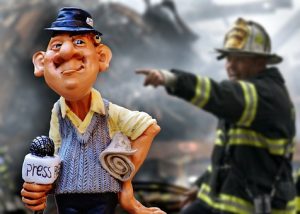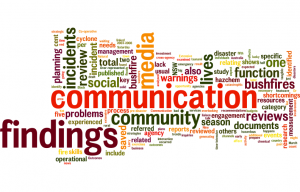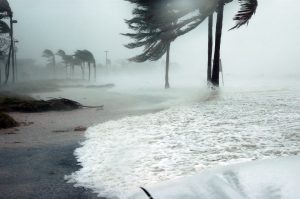
Photo credit: Alexas Fotos, Pixabay
With 20% of problems encountered in disaster management related to media affairs and communication with the community, qualified emergency communicators are more important than ever to a successful emergency management response.
That’s why the University of Southern Queensland now has a graduate certificate for communicators in emergency management.
The Graduate Certificate of Business – Emergency and Disaster Communication is a four course qualification with special flexibility to work around disaster seasons that students are dealing with around the world. It covers communication for all phases of disaster management, with special emphasis on change communication, community engagement and disaster management. Social media or crisis communication can also be included in the qualification.
The new program starts in July 2017 and is part of the Master of Project Management, which students can elect to continue once they have finished the graduate certificate with the emergency and disaster communication specialisation. We also have pathways using these courses into other Masters programs.
Talk to us about credit for skills, experience and previous post-graduate study in communication fields!
Key staff for the program are Matt Grant and Dr Barbara Ryan. Matt has extensive crisis and disaster response experience with the Australian Defence Force working as the senior communications manager for a range of military operations in the Asia-Pacific and Middle Eastern theatres and in 2004-5 coordinated Whole of Government communications on the ground from Banda Aceh, Indonesia after the Boxing Day tsunami. He has also been regional news director for WINTV Queensland and has held corporate public affairs roles. He has worked in journalism and public affairs for 25 years.
Barbara Ryan has a Ph.D in how people get information in disasters, and experience in response and recovery communications for bushfires and floods at local disaster management level. She also spent seven years as volunteer co-ordinator of communication for a district disaster management group in Queensland, Australia. She was a Mary Fran Myers Scholarship winner for early career disaster researchers, and currently conducts research for agencies in Australia. Barbara is also a co-founder and former director of Emergency Media and Public Affairs, a membership organisation for disaster communicators, and organised the 2013 Fulbright Fellowship with former FEMA Acting Director External Affairs and U.S. Department of Homeland Principal Deputy Assistant Secretary Public Affairs, Bob Jensen. She has more than 20 years public relations experience.
The University of Southern Queensland is located in Toowoomba, Queensland, Australia, and is a world leading distance education university. We have a 92% satisfaction rating amongst communication post-graduates for their courses!


 by four months past its usual end, Victoria and NSW working fire business as usual and cyclone watchers waiting for the big one, which could still happen in the next few weeks.
by four months past its usual end, Victoria and NSW working fire business as usual and cyclone watchers waiting for the big one, which could still happen in the next few weeks. the southern hemisphere, emergency managers will be thinking about a big one that might lead to evacuations. And it appears that local information is the key to informed evacuation decisions.
the southern hemisphere, emergency managers will be thinking about a big one that might lead to evacuations. And it appears that local information is the key to informed evacuation decisions.